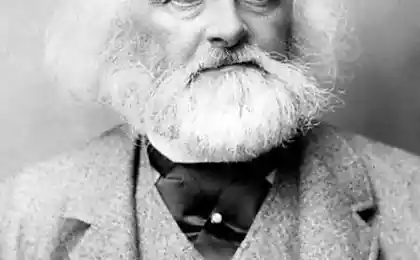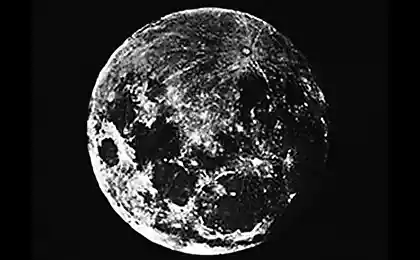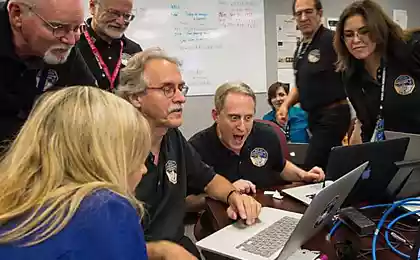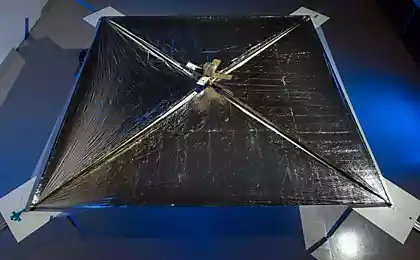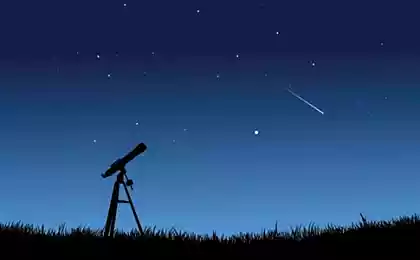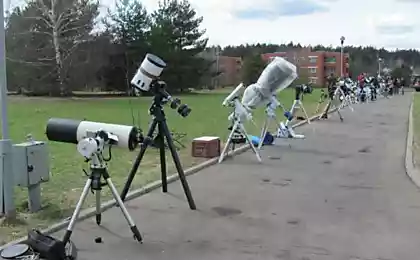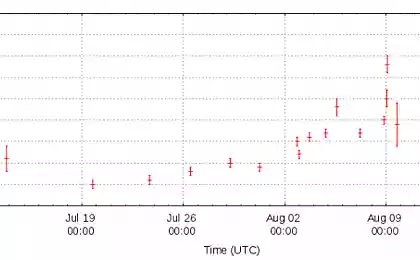Astronomy Day
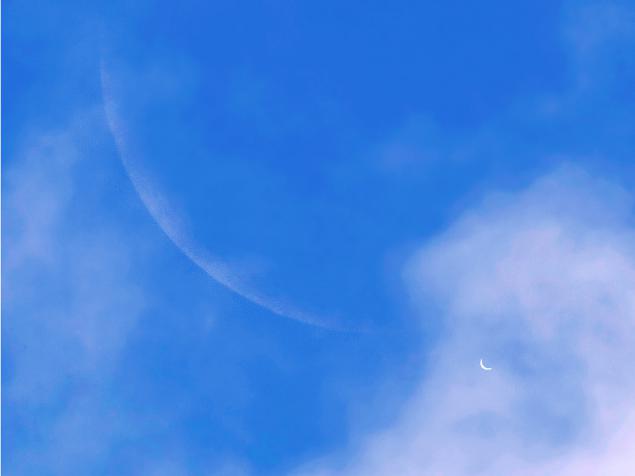
The Moon and Venus in broad daylight. Source: Astronomy Picture of the Day , author: David Cortner . i>
I tried to refer to all the authors for an article I found pictures. The authors of videos from YouTube can be seen in the YouTube. Where the author is not specified, use my own photo. I>
Sun
The most obvious object for daytime observation is the Sun, because it is not visible at night. Watch the sun can only be through a dense filter, otherwise you will spoil vision. You can choose to изготовить Filter using a special пленку, or buy finished glass filter . In rare cases, atmospheric haze forms a natural filter, and you can see large patches even to the naked eye. In this photo below and left of center disc visible sunspot group 2396 AR .

But in a small telescope with a filter солнечные spots look like this:

With the help of simple manipulation in a graphics editor can detect subtle eye факелы - Bright patterns surrounding spots.

At the top of the image to show the scale, I added an image of the Earth and the Moon in compliance with all proportions (the diameter and the mutual distance).
Moon
Many are not even aware that the moon is clearly visible in the afternoon. It can be seen almost every day, except for dates close to the new and full moon. Waxing Moon visible in the afternoon, decreasing - in the first. Now just a good visibility waning moon, you can easily notice it in the morning on the way to work. Photograph moon day, you can even on a mobile phone:
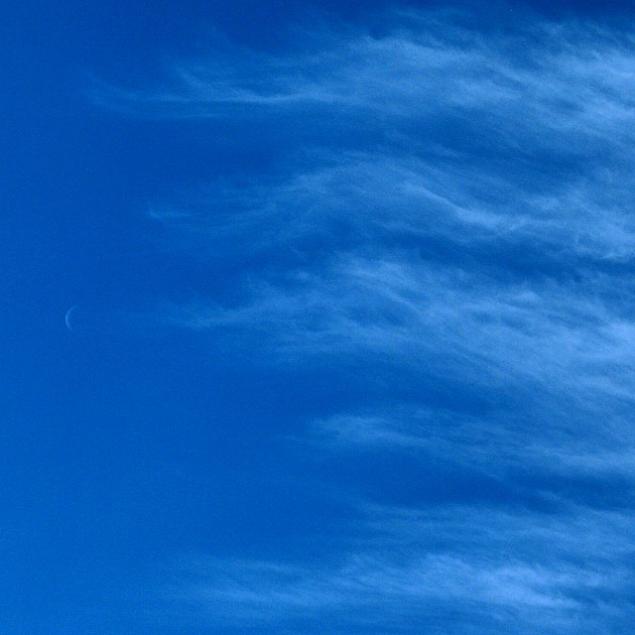
Or tsifromylnitsu:
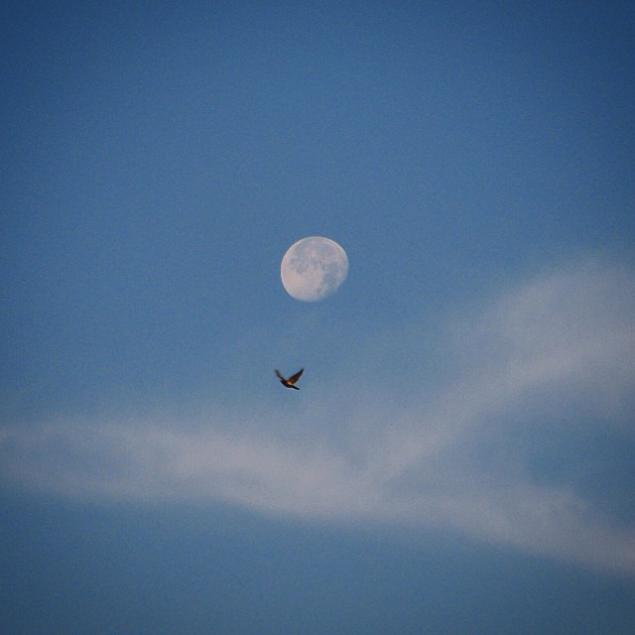

The telescope lunar craters can be seen during the day, and the photos on the background of the blue sky look even more beautiful night with a boring black background.
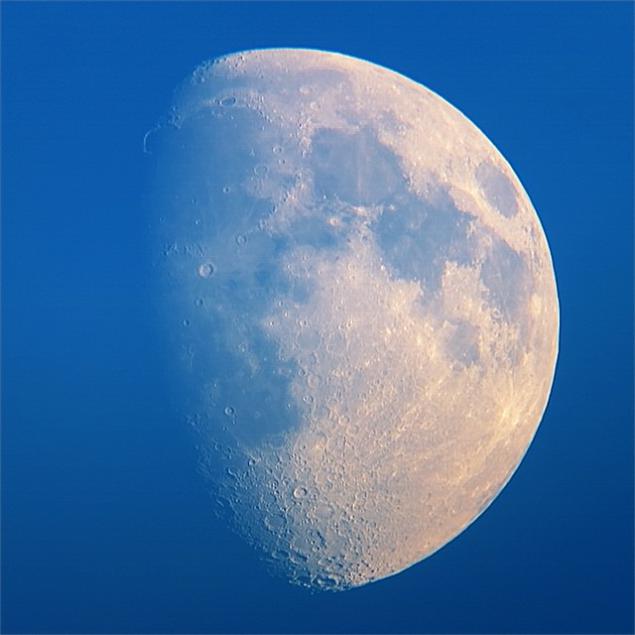
After a few shots at intervals of a day, you can see not only the phase shift and либрации.
#Moon libration and phase change. This video is based on only three pictures taken at August 13, 14 and 15. I have used morphing software to make smooth video. A video posted bylunogram on Aug 15, 2014 at 9:05 am PDT blockquote >
And here is a picture of a record of a narrow crescent, made by photographer Thierry Legault :
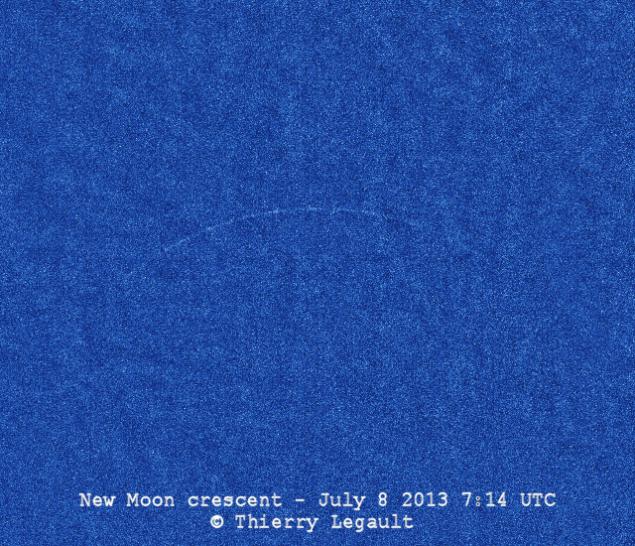
During shooting, the moon was just four degrees from the sun. To protect against exposure photographer had to build such a device here:
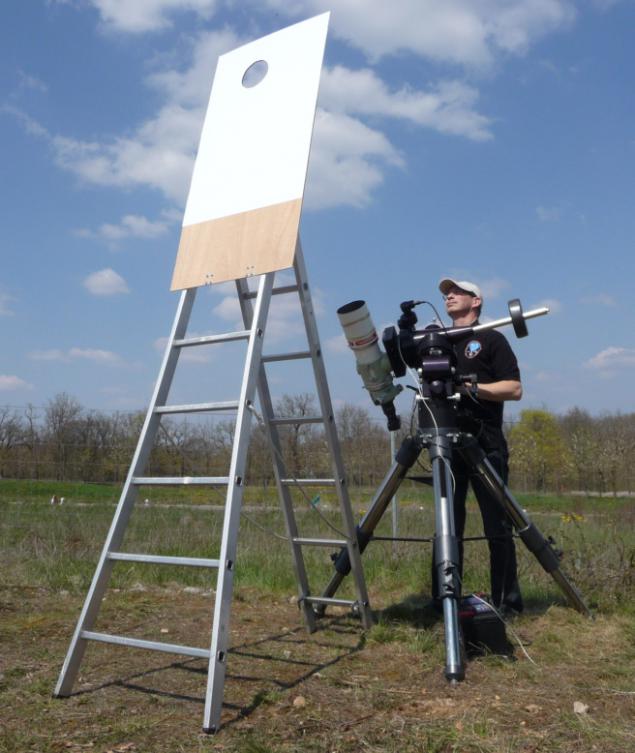
And finally, speaking of the Moon as solar eclipses do not remember during which the moon passes in front of our main day luminary.
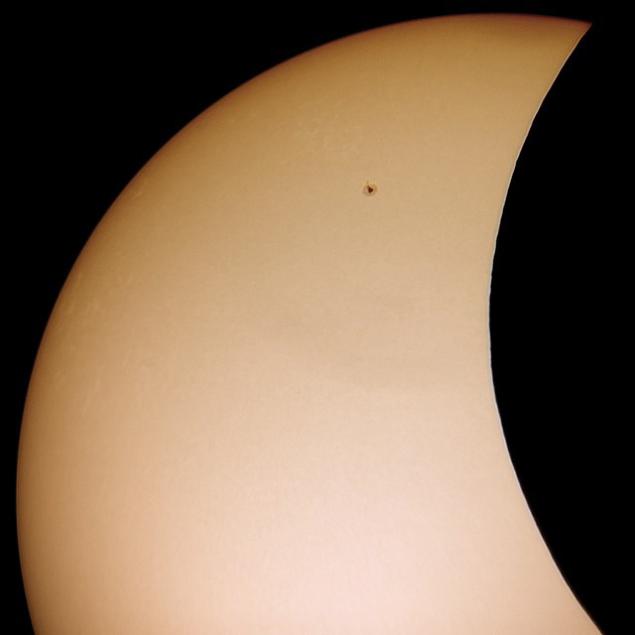
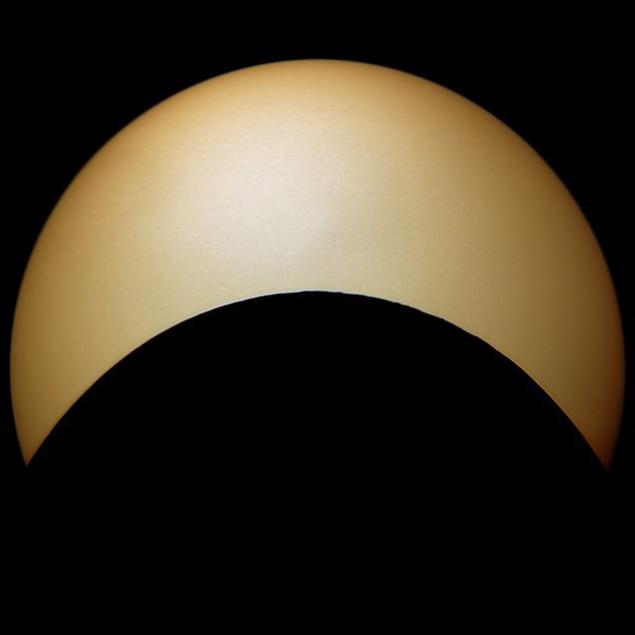
More recently, images of the eclipse can be found in my article Watch Solar Eclipse together .
Venus
Venus day is more difficult to see than the moon. In the first photo in the article can be seen that the surface is much brighter than the Moon's surface, but its small size and to the naked eye, you will see a white dot. To see Venus during the day, find out its current position in the Stellarium or any other application-planetarium. In most cases, it will be in the 20-50 degrees west or east of the sun. Stand so that any building protects you from the sun but leaves the visible part of the sky where Venus. If you want to use binoculars or a telescope, be careful. In the search for planets always stay in the shade to accidentally look at the sun. A few weeks before or after the нижнего Connection crescent of Venus is best seen (and now just such a good time).
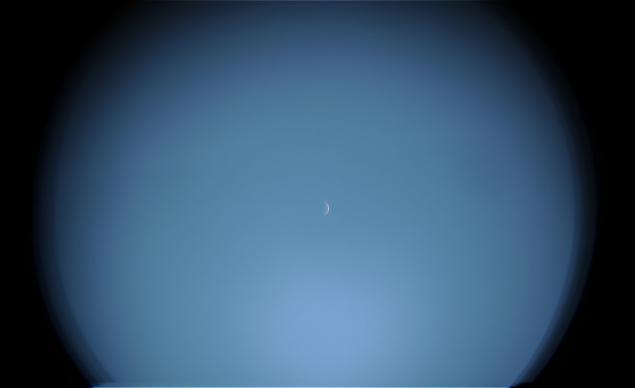
The narrow crescent is so bright that the light shines through the clouds, which is clearly seen in the videos below.
#Daytime #planet #Venus through the #clouds. A video posted bylunogram on Aug 30, 2015 at 4 : 56am PDT blockquote>
One more video of #daytime #Venus. A video posted bylunogram on Aug 30, 2015 at 5:02 am PDT blockquote> Jupiter
Jupiter is much further from the sun. To see it with the naked eye during the day is incredibly difficult, it is much fainter than Venus.
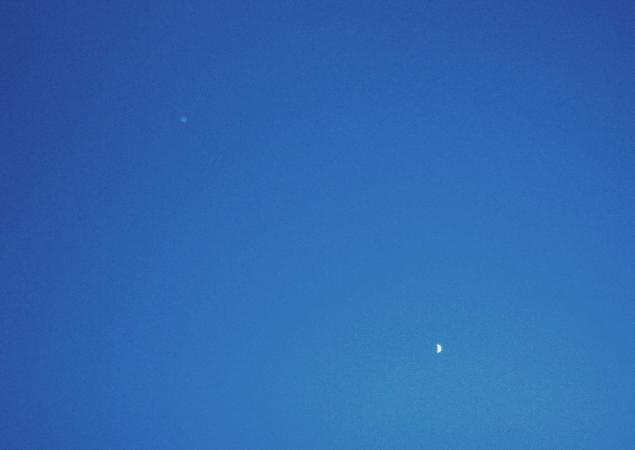
The connection of Jupiter and Venus. Source: spaceweathergallery.com author: Francisco Diego. I>
On the surface brightness he is more like a crescent moon.
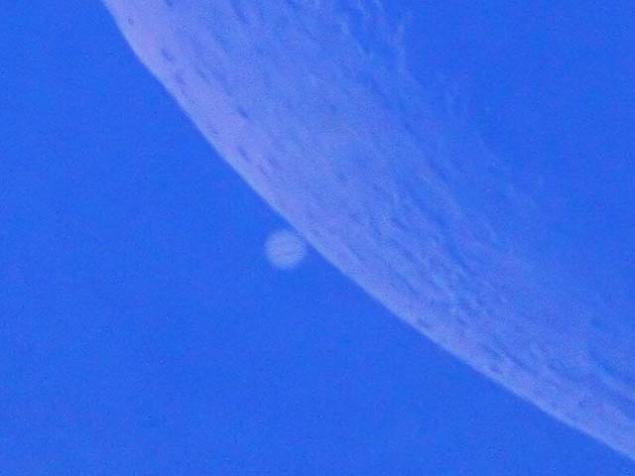
Source: Sky and Telescope , author: Gary Seronik. i> < br />
However, some photographers manage to make the day a picture that displays the details of the surface of Jupiter and even his companions:
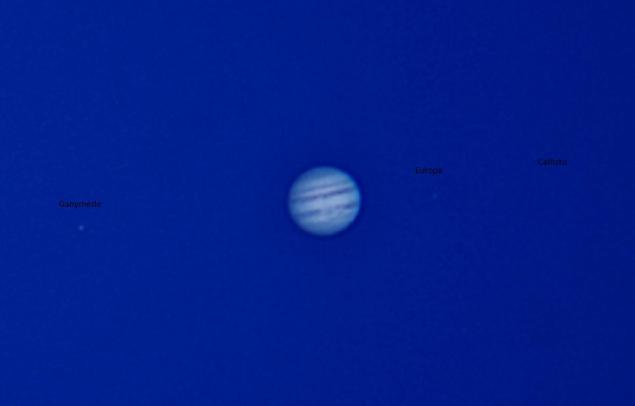
Source: Stargazers Lounge , author: Steve Ward. i>
Mars
Occasionally, during the великих confrontations , Mars shines as bright as the moon of Jupiter. The truth is while the opposition of Mars is not visible during the day - it goes with the sunset and sets at sunrise. Therefore, during the day it can detect only in this form:
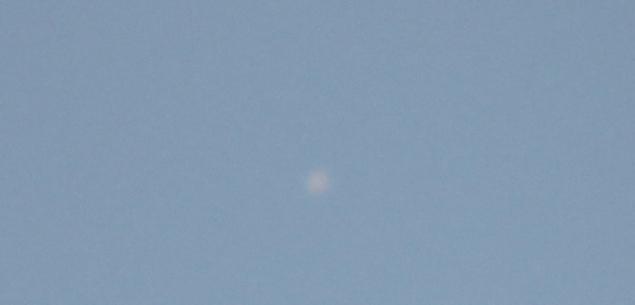
Source: spaceweathergallery.com author: Philip Romanov. i>
Mercury
Observations of Mercury are complicated by the fact that it is rarely in the sky away from the sun on a comfortable angular distance. Try to find Mercury in this picture.
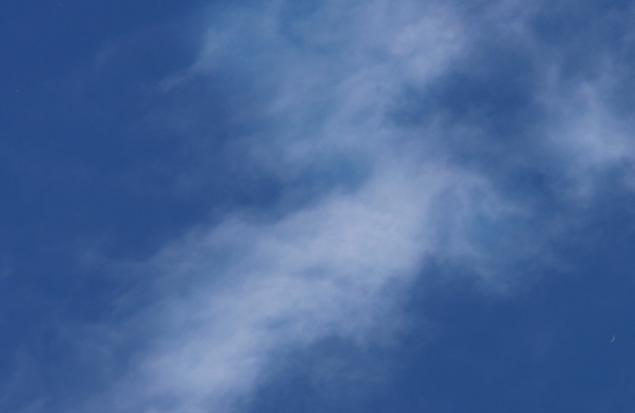
Venus and Mercury. Author: Emil Ivanov . I>
If not, click-open larger image.
A good chance to see the day Mercury will be May 9, 2016, the day the planet will pass across the solar disk. An interesting fact - 26 July 69163, the Mercury and Venus will make a joint transit of the sun. Previous simultaneous transit was 373 173 BC. e.
Satellites
I've written that the ISS is not inferior to the brightness of Venus, so it can also be seen during the day. During the day it looks like a white dot floating in the blue sky. And if you use a motorized telescope mount, and special software to track the satellites, you can shoot it on video in all its glory.
Sometimes the ISS flies close to the moon, or even crosses her drive. In this case, to see and to photograph it is much easier because the Moon will be a prominent landmark.
But the span near Venus:

Source: wral.com , Author Unknown i>.
If the ISS will fly on a background of the solar disk, its dark silhouette can be seen using the same means as for the observation of sunspots.

The same flight on video:
International Space Station (#ISS) is transiting the #Sun. A video posted bylunogram on Apr 28, 2015 at 12:53 am PDT blockquote>
Predictions flown ISS near other celestial objects can be found at calsky.com .
Вспышки Iridium can be several times greater than the brightness of the ISS, though they last only a few seconds.
If you did not see anything, open the video in full screen mode.
Deep sky
It seems incredible, but using H-alpha filter bright nebula can be photographed in the sunlight. I gathered animation from a series of pictures M42. The first picture was taken at sunrise, the last - in forty minutes after sunrise.
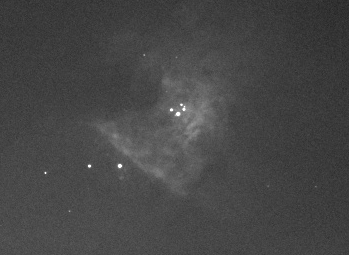
Sami pictures are not mine, found them here - www.princeton.edu/~rvdb/images/NJP/m42daytime.htmlКак You think of the idea to observe the day to anything other than the Sun? this is a waste of time, better wait for the night this has something interesting Voted 145 people. 27 people abstained. Only registered users can participate in the survey. Sign , please.
Source: geektimes.ru/post/261136/

















